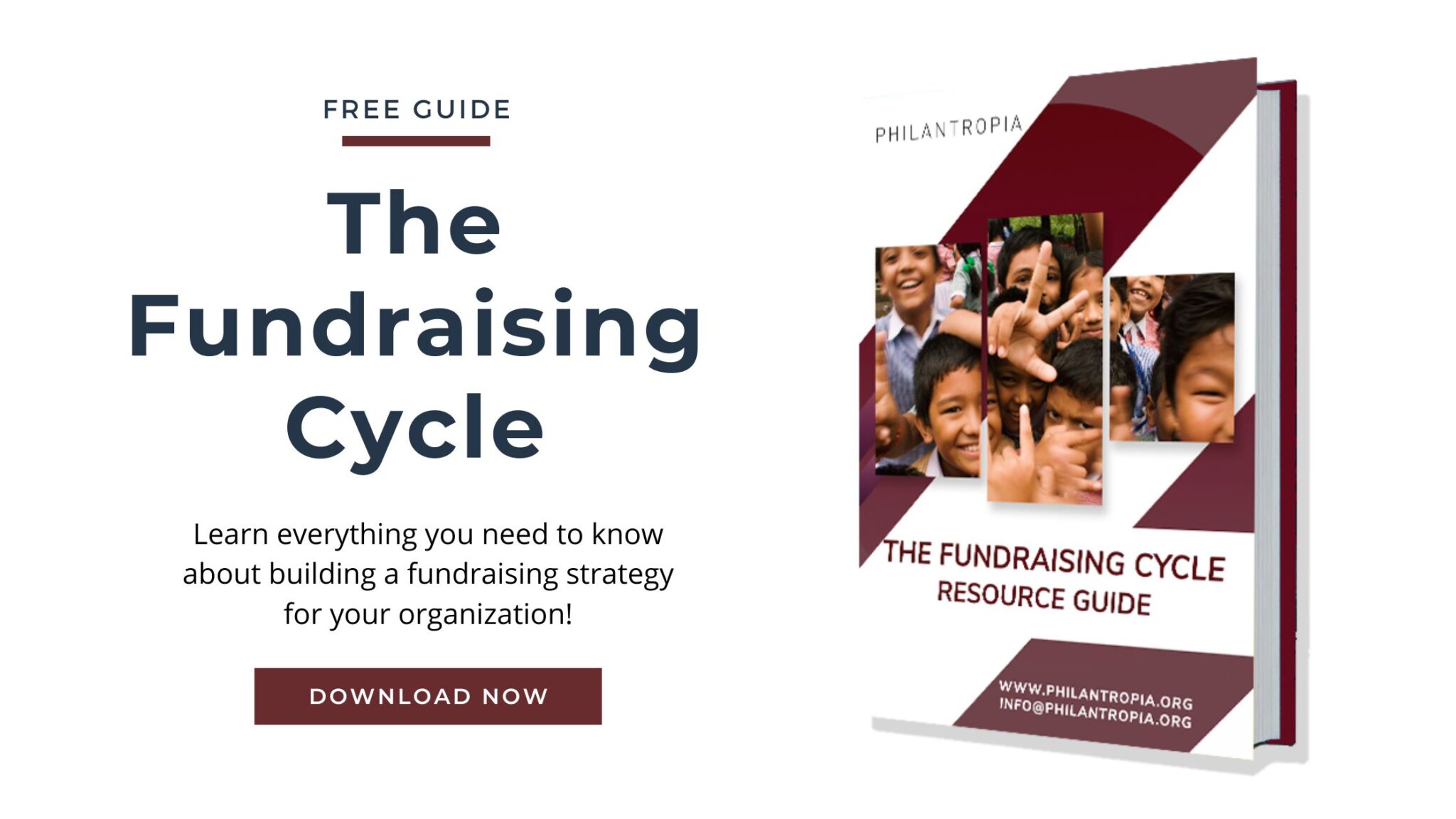In the non-profit world, a Grant application (a.k.a proposal) is a document with which an NGO puts forward a specific project to a donor for funding consideration. Thus, a grant application is a tool for NGOs to gain funding, and for donors to decide who to fund. In other words, the application explains the plan and purpose for the set of activities an NGO wishes to implement, and requests funding from a donor.
A lot of organizations see grant application as a time-consuming chore. In fact, there are many benefits to writing a grant application. It does more than just secure grants. The process of drafting an application helps NGOs plan a project from the idea stage to reality. It provides a way to flesh out, explain, test, prove, critique and share the project details. Additionally, donors pay great attention to the contents of the grant application. Donors cannot read minds, and very few are able to visit the project site of every applicant. So, donors have to make do with the information they receive in the proposal and learn to read between the lines.
Writing a grant application is a skill all NGOs need throughout their entire institutional lifetime. It is important to build these skills early and keep them within the organization. Here we give you 10 quick tips to improve your grant application.
1.Update your title
For so few words, the proposal’s title is disproportionately important. Your project title provides the first impression of your project to a donor. Make it a good impression. A good project title should be succinct while aptly supporting the main pillars of your project.
A title should:
- Inform the donor of the project’s main focus
- Inform the donor of the project’s location
- Share with the donor what makes the project unique
- Make the donor remember the application
A great project title does this and also helps the donor remember your project.
2. Executive summary tailored to the donor
A good introduction or executive summary lays a roadmap for the donor and also directs them to the most important pieces of information in the proposal. It showcases the important aspects of the grant application clearly and succinctly at the top of the document. This can vary in length from a couple lines to one page, but it should always fit on the same page. Even more importantly it should highlight any requirements the specific donor has. For example, if the donor mandates that the project promote women’s issues, directly address this here. If the donor stipulates the grant must take place in Nepal, state this as well.
3. Move or delete your organizational profile
For a variety of reasons, your organizational profile is of little importance to the donor – at least in the initial proposal. So save space for the more important project information and either include a short profile at the end of your application or as an annex. The focus of the grant application should be on the project, and donors should be able to learn about the organization online or through their networks. In multi-stage application processes, typically donors do not require a detailed organizational profile until after a proposal makes the short list. Donors will review your organization’s capacity in the application process, but at a later stage.
4. Focus your impact
While projects often do need to be holistic, projects without a central theme or goal often appear disorganized. Fix this by highlighting a primary theme with supporting cross-cutting themes. For example: if a donor is interested in child health, then in the project rationale the NGO needs to prove a child health crisis exists in their community and that the project can solve it. Also, make sure you take the time to explain the importance and necessity of the project. Do not assume donors will automatically understand the difficulties faced by your beneficiaries. Explain the organizational strength and capacity in addressing this problem and achieving long-term impact. Case studies are a great way to highlight your point, either through stories or research.
5. Add brand value
According to a recent survey, nearly half of the donors said that they reject the application due to the lack of information NGOs provide on their core value and connection with their beneficiaries. NGO must demonstrate how their cause is unique, effective, relevant and worthy of support in their grant application. This is the brand value of your organization. Establishing a strong brand value is becoming essential in a grant application to stand out and survive the competition. You need to visually represent your brand. Adding a cover page with your logo and picture, including your website in the footer, etc. are simple ways to distinguish yourself from the crowd. Even if you do not have a logo or website, a simple and consistent color scheme can do the trick. Or including images from past projects.
6. Consolidate your contact information
You want the donor to contact you back, but adding too many communication methods can actually be detrimental to this goal. Too many contact details look cluttered and are more likely to result in typos or mistakes. A Contact information may include a contact person name, address, country, phone, email, website, Skype, social media link. Only include communication channels that are checked regularly and are reliable. Social media links are generally not important in a grant application unless they are the main communication channel or take the place of a website.
7. Check your budget
A budget is often seen as a more unprejudiced, factual account compared to the narrative part of the application. Numbers cannot lie. But a bad budget can ruin a great proposal. It very common for minor errors to appear in the budget. Even if the budget was developed in Excel, always check the math to make sure no errors were made. Double and triple check the categories, units, and amounts to ensure everything is correct and accounted for. Usually, donors are flexible, but some donors will insist on funding the presented budget, even if later errors or omissions are discovered. A budget should not only add up, but it also has to support the logic of the proposal’s narrative. From a donor’s perspective, the budget is the main proposal. Always re-check if you have over or underestimated the cost described in your goal statement.
8. Review the donor guidelines again
In most funding rounds, 50% or more applications are rejected because they do not meet all donor criteria. Before you send in your application, make sure each section is complete, it exactly matches donor priorities, and is submitted with the proper form and method. You do not want your application thrown out before it is even read due to a technicality. Go through the donor’s application guidelines at least three times and list out which details the donor cares about in its applicants.
9. Content formatting
It is not necessary to hire a graphic designer, but a little bit of marketing can go a long way in getting the donor to remember you. If you are not confident in your design abilities, Microsoft Word offers a number of themes, templates, and color palettes to get you started. Every part of the proposal is designed to further the previous section. This means that making a change to one section may have repercussions throughout the rest of the document. Double-check the log frame or sketch a quick flowchart to make sure every piece is connected and flows logically. Once the content is consistent, also make sure the formatting is consistent. Font and text size should be standardized, all headings should match, spacing, margin sizes, etc. should all be standardized. Inconsistent formatting looks disjointed and can lead the donor to believe that the entire proposal was copied and pasted together.
10. Check spelling and grammar
Some donors are very particular about grammar and spelling and think small mistakes may indicate the applicant is not very professional and rushed. Others may place less importance on it, but some small mistakes can change the meaning of, cause confusion or even make the proposal very difficult to comprehend. Worse, a lot of mistakes may indicate there will be future communication issues if the grant is approved. Always have other people review the proposal for mistakes. Also, be sure to go through the text and update any specific references to donors or past projects. It is common to reuse sections of old proposals in new applications, but if this is done make sure any identifiers are removed.
Bonus tip:
Ensure the proposal is specific to the donor: Check to make sure the donor name, contact information, application procedure, supporting documents etc., all match up with the specific donor. Accidentally leaving in the name of a different donor is a big mistake.





Thank you Alta this is very helpful. One question though, what would be your suggestion on using font colours to make your proposal stand out.
Hello,
In general, I would say no to colored fonts. Most NGOs who try this tactic only succeed in making their proposal too distracting or hard to read. Color can sometimes be used well in small amounts in your logo or headings, but make sure the text is still easy to read even if printed using a grey-scale printer.
I hope this helps!
Thank you so much for providing few tips on grants writing. It seem helpful for the grant writer since the crital portion is donor priorities which in most cases are missing unknowingly or jumping for delay submission. Infact, the information embeded in the tips will help to keep update the crital portions for writing proposals
Hello Dilip,
thank you for your comment. We are very happy that our content helps you in your proposal writing.
Thanks so much Eva can i get your email address for further inquiries
Hello: you can reach us at info@proposalsforngos.com
amazing hope there is more 😍
Thank you Alta for this important information
Thanks very much for this great tips.
This is very useful informaiton.
Thank you Alta.
Thanks for sharing your 10 tips are very insightful..
Thank you very much Ms. Alla
And also it’s a good idea and marketing For your company too, but because of this kindness, we are going to decide, to cancel Our contract with privouse NGO, Because since 4months they did nothing, let me read this SAMPLE
After this we will be untouched.
And also thanks again PROPOSAL for NGO
Sorry to disturb you,
One think more, you are thinking that, this concept is simple and without …
Because now we are going to DIGITAl Stage .
Hi
Hi
we are new network called Somali disability network consisting 16 DPOS so we are looking for new partner donor and other consultant or expert.
This was very insightful, thank you Alta.